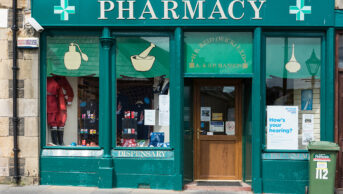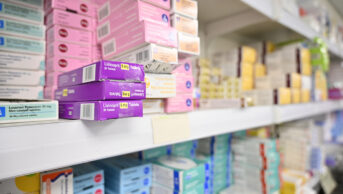
Shutterstock.com
The UK government is to take forward its plans to allow community pharmacies in England to make more of a profit on generics where there is no low-cost brand alternative.
The reform is designed to prevent community pharmacies losing out when clinical commissioning groups (CCGs) and GPs specifically prescribe branded products owing to their lower cost.
The proposals, which were first published by the Department of Health and Social Care (DHSC) for consultation in July 2019, suggest adjusting the cost of category M generics for which a low-cost branded version exists, so that community pharmacists recoup less money from these medicines and more money from all other category M medicines.
However, industry bodies have warned that the government’s plan to adjust how much margin is recouped from certain generic medicines could “lead to constraints on supply” if improperly implemented.
Category M drugs are classified as generic medicines that are available from more than one manufacturer and fulfil certain minimum spend or volume requirements.
Under the current system, the DHSC calculates category M prices based on quarterly information provided by all manufacturers and suppliers. The reimbursement prices for community pharmacy include an added margin allowing pharmacy contractors to retain some money on the medicines they dispense.
The medicines margin must total £800m annually under the ‘community pharmacy contractual framework’.
However, some branded generics are priced below the category M reimbursement price for generic versions of the same drug, making them look cheaper to prescribers as category M reimbursements do not apply to branded drugs.
According to the consultation document, this encourages CCGs and GPs “to prescribe the product by brand rather than generically”.
“In addition, where a CCG recommends prescribing the branded product because they see it as a cheaper approach, pharmacy contractors in the CCG’s catchment area do not have fair access to medicine margin as they do not retain medicine margin on brands,” the proposals said.
To address the problem, the DHSC suggested adding “less medicine margin to those generic medicines for which branded equivalents are available and that are priced below the generic medicine, and as a consequence add more medicine margin on all other category M medicines”.
Following 283 responses, of which 170 agreed with the proposals, the DHSC said it “intends to progress this proposal”.
However, it plans to have more detailed discussions with the Pharmaceutical Services Negotiating Committee (PSNC) on “as to what level of medicine margin would be appropriate for branded generic and generic products listed in category M” before implementing the reforms.
The response document added that the DHSC will also discuss “applying a different level of discount deduction to branded and generic products”.
Mike Dent, director of pharmacy funding at the PSNC, said the negotiators have “been part of the discussions around the potential ways to reform reimbursement for several years”.
“The impact on community pharmacy contractors needs to be carefully considered at all stages, and we will be discussing this matter once again at the November PSNC meeting. As per the Department of Health and Social Care’s response, we expect to now begin more detailed work with them on the proposals.”
In its initial response to the consultation, the PSNC warned that the government’s proposals risk “exacerbating problems around drug availability and shortages”, adding that reforms “would need to be made gradually and would need to be carefully monitored to ensure any unintended or detrimental effects are identified”.
A spokesperson for the British Generic Manufacturers Association told The Pharmaceutical Journal that it is “broadly supportive of the main principle laid out in this consultation”.
“There is, however, a need to ensure the implementation is appropriate and does not cause unintended consequences. For example, looking at the proposals to reduce the Category M reimbursement price for unbranded generics where an equivalent branded medicine is priced lower, it will be important that the changes do not lead to unbranded generic prices being pushed too low and that this leads to market exits.
“This is particularly prescient given rising costs for materials, manufacturing, shipping containers and freight. This may lead to constraints on supply, lessen competition and go against the intent of the proposal”.
The government’s impact assessment has said the reforms would impact 33 manufacturers, but “for over three quarters of these, the branded alternatives represent less than 10% of their total marketing authorisations”.
It added that, for only 6% of manufacturers, branded generics make up more than half of their total marketing authorisations.
Read more: Revealed — the generic price hikes increasing the NHS drugs bill


